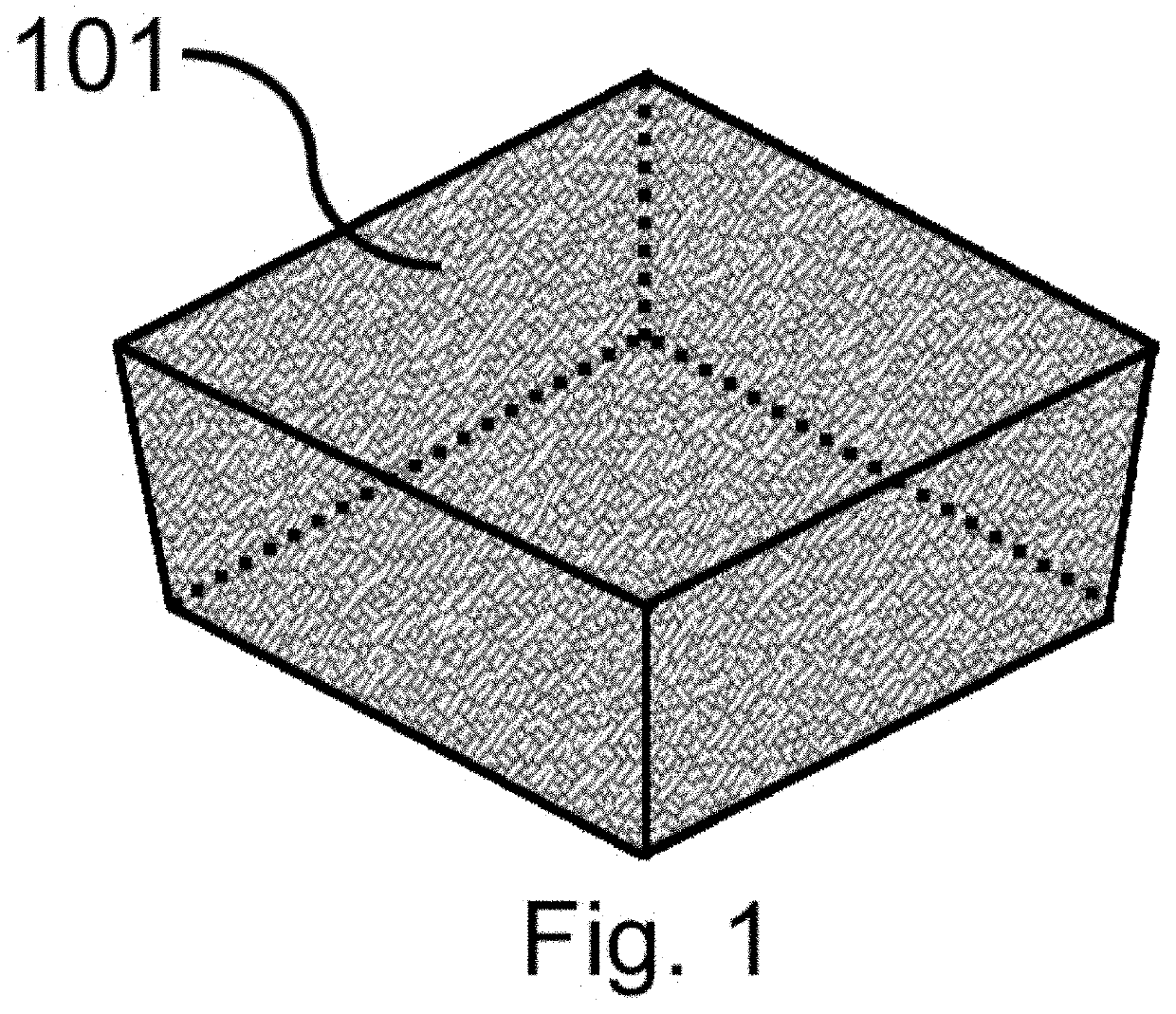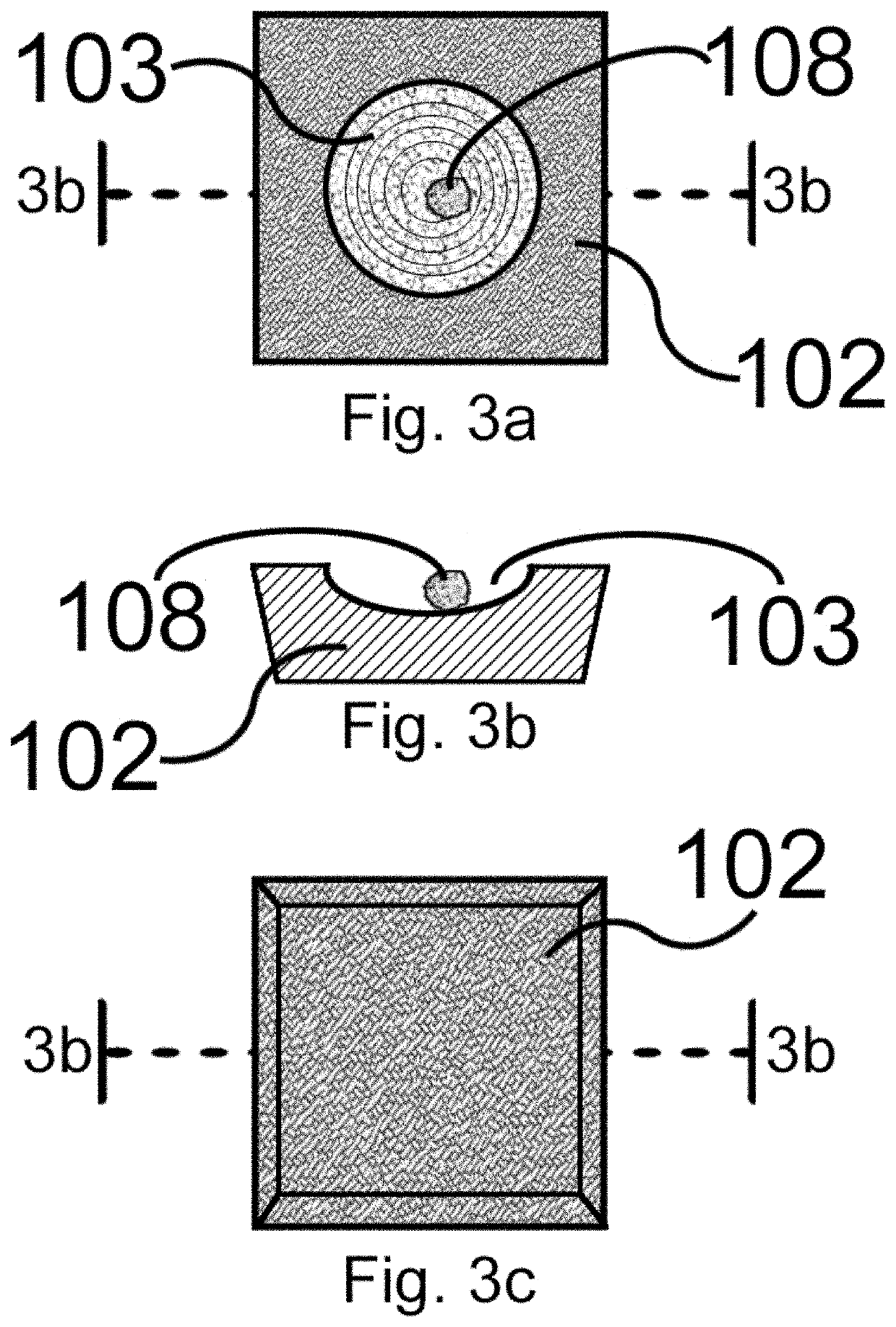Three Methods for High-Volume Asexual Propagation of Octocorallia (Alcyonaria) and Corallimorpharia Soft Corals
- Summary
- Abstract
- Description
- Claims
- Application Information
AI Technical Summary
Benefits of technology
Problems solved by technology
Method used
Image
Examples
Embodiment Construction
[0123]Method A—High Volume Asexual Propagation Technique for Octocorallian Soft Corals Using the Dimple Cube 102 Method (DCM)
[0124]Originally it was attempted to grow soft coral cuttings 108 individually on natural calcium carbonate rocks, wrapping the large cuttings with a net and rubber banding them. Success was limited with some species, but most coral species were not successfully propagated at all. Mortality rates were high and the method was labor and space intensive.
[0125]After long deliberation and much experimentation, cubes with small depressions called dimple cubes 102 were created. The dimple cubes 102 were arrayed on a polystyrene eggcrate 111 plate which together was called a dimple cube plate (DCP) 104. (FIG. 4b).
[0126]Dimple Cube Method:
[0127]The method using dimple cubes to propagate soft corals evolved over time. First a healthy acclimated colony of the soft coral is removed from the saltwater tank and parts of it's tissue (usually the capitulum or cap) is carefull...
PUM
 Login to View More
Login to View More Abstract
Description
Claims
Application Information
 Login to View More
Login to View More - R&D
- Intellectual Property
- Life Sciences
- Materials
- Tech Scout
- Unparalleled Data Quality
- Higher Quality Content
- 60% Fewer Hallucinations
Browse by: Latest US Patents, China's latest patents, Technical Efficacy Thesaurus, Application Domain, Technology Topic, Popular Technical Reports.
© 2025 PatSnap. All rights reserved.Legal|Privacy policy|Modern Slavery Act Transparency Statement|Sitemap|About US| Contact US: help@patsnap.com



